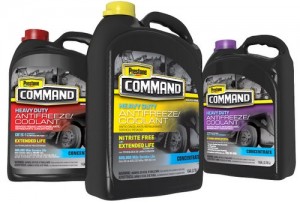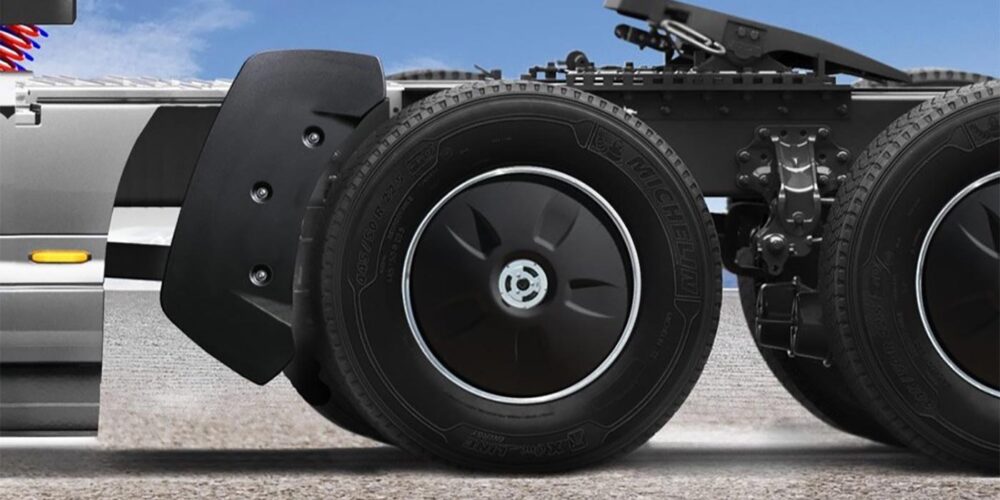Fuel is another issue for transportation refrigeration units (TRUs, or reefer units) in the winter, points out Larry Adkins, the product applications manager for Wabash National Corp.
“TRUs are designed to operate at ambient temps below freezing. If the TRU is maintained properly, the biggest complication during winter is fuel. So, consider fuel additives,” Adkins advises. “Typically No. 2 diesel reaches cloud point at 10°F and pour point at 0°F. If you are headed to an area that has the potential to reach those temperatures, the right fuel additive will keep your fuel flowing. Most additives need to be added to warm fuel to be effective. Additive dumped in a tank of cold fuel will not mix correctly. Always follow the TRU manufacturer’s maintenance instructions.”
Reefer units are built to keep cargo cold, so one could be forgiven for believing that the extreme cold temperatures couldn’t affect them; not so, says Great Dane’s Fetz.
“For frozen items, there’s no such thing as too cold. For fresh items, it’s another story,” he explains. “Shipping delicate items such as produce in freezing conditions can lead to the products being ruined. If you freeze something like fruit, it’s literally the death of the produce. It brings on decay reactions and the produce will really suffer—think something like a strawberry or a peach.”
Air distribution, Fetz says, is key for transporting these fresh items:
“The reefer unit swirls more or less like an air curtain around the load, picking up and circulating the air from outside and blowing it out the front. If the load falls against the wall, for example, then the air can’t get around it. That’s one of the problems you run into in the winter time—even if you have good air circulation.”
“If the TRU is not operating properly there is risk of freezing the cargo,” says Wabash’s Adkins. “A dry van operator carrying protect-from-freeze cargo should have access to thermal blankets or portable cargo heaters to protect temperature-sensitive freight.”
Adkins also points out three keys to inspect on your truck to ensure it holds up in the winter: Inspecting the TRU fuel tank for water; checking tire pressure; and keeping the trailer’s air system clean and dry.
Coolant

“It is necessary that the cooling system be prepared for the winter months,” says John Tannone, engineering manager for Prestone Products Corp. “It is always critical to check your coolant concentration and inhibitor levels prior to the onset of cold weather. This will ensure the correct freeze, boil, and corrosion protection in the extreme cold conditions.”
Stede Granger, the OEM technical services manager for Shell Rotella, says that if you’re using the right kind of coolant, you won’t need to worry about doing anything differently in the winter.
“With these new extended life coolants, there should really be nothing that you do in the winter that you wouldn’t do in the other months,” Granger says.
Extended life coolants (ELCs) have been around since the late 1990s, and now a majority of trucks use them.
“What separates these extended life coolants from the older style,” Granger explains, “are the additives. The older additives would deplete very quickly, but with extended life coolant, the additives are electromagnetically attracted to the surface when corrosion occurs—but not otherwise. This way additives stay in the coolant much longer—we advertise up to 600,000 miles.
“ELCs are also much more desirable from a heat transfer standpoint—radiators maintain brand-new heat transfer capability, because mineral deposits no longer build up,” he adds. “ELCs are much cleaner, and that’s a real plus from a chemistry standpoint. ELCs also significantly increase water pump life.”
“The water to glycol ratio of the selected coolant should be checked to ensure that the cooling system is filled with a heavy-duty formulated coolant technology that can provide the proper freeze protection,” advises Peak Commercial and Industrial’s technical director, John Turney. “Typically, a 50/50 prediluted ethylene glycol-based coolant technology provides enough glycol content within the system to ensure that the coolant does not freeze solid or expand to the point, which would damage the engine.”
Engine heaters are another important aspect of the truck to watch in the winter. There are essentially three types of engine heaters: Internal engine heaters; External engine heaters; and Coolant engine heaters. The choice, Prestone’s Tannone says, basically comes down to each individual fleet’s needs, as well as the manufacturer recommendation.
“Engine heaters preheat the coolant and/or engine block to allow for easier cold weather startups, which reduce wear on the engine, improve fuel economy, reduce emissions and provide heater to the passenger compartment faster,” he explains.
“These heaters will ensure that the coolant never achieve ambient temperatures when functioning properly,” Peak’s Turney says. “This will prevent cold start issues and will help the operator save time, as the engine should achieve normal operating temperatures quickly.”














